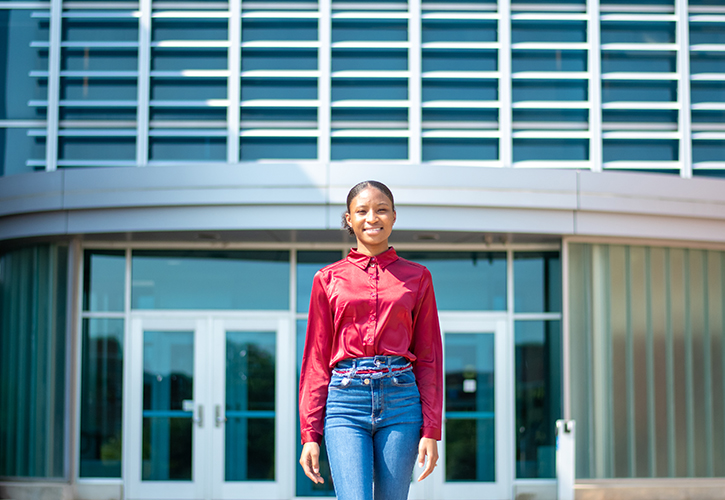College of Arts and Sciences Newsroom

University of Dayton launches donor-funded urban forest fellowship program to engage underserved high school students in city’s ecosystems
By Dave Larsen
Like the proverb “mighty oaks from little acorns grow,” a new University of Dayton initiative to connect Dayton high school students to the city’s urban forests sprouted from a donor’s small gift to the College of Arts and Sciences.
The Urban Forest Fellows program was launched during summer 2021 by forest ecologist Ryan McEwan, professor of biology and director of the environmental biology program. He hopes to develop the program in collaboration with the City of Dayton to help address environmental problems such as the city's more than 6,000 vacant lots that need tending. He also wants to introduce underserved high school students to the University and STEM career fields, and provide them with a direct training opportunity related to urban forests.
“There are some basic functional things that a student team could do if they were trained properly,” McEwan said. “The students would experience engaging with a college professor — me and my lab and grad students — so they would learn a lot about the university atmosphere, what it’s like to be on a campus, and they would learn a lot of environmental biology by doing the work.”
This summer, McEwan is working with senior environmental biology major Niani Brown and incoming graduate student Grace Attea ’19 to create a system to recruit high school students and build a network of contacts with Dayton science, engineering, technology and mathematics educators.
Their work is being funded by Richard “Rick” Borth, an NCR retiree whose late wife, M. Virginia “Ginny” Ferron ’81, earned an economics degree from the University of Dayton. Borth is the parent of two University alumni — David Borth ’16, who holds a bachelor’s degree in chemical engineering and a master’s in materials engineering, and Eric Borth ’17, who holds bachelor’s and master’s degrees in biology.
As an undergraduate, Eric Borth spent several summers working full-time in McEwan’s forest ecology lab. As a graduate student in the lab, he completed a project based on forest dynamics and fire ecology in the Siberian arctic.
Rick Borth hopes the fellowship program will expand over time to teach more young people about sustainability, while also addressing community food, energy and juvenile criminal justice issues.
“We’ll start out with two people that we’re supporting, but they’re going to keep multiplying,” Borth said. “Hopefully, it will be four people by the end of next year who have touched 16 people. So, if you look at it that way, it’s a great project to start teaching people the value of sustainability, based on science — the STEM side of things.”
Brown, a Dayton native, said the program’s goal is to encourage environmental awareness and engagement, especially as it relates to urban ecosystems.
“Ideally, this program would partner with local organizations and schools to get underserved high school students engaged in the environment,” she said. “Because environmental education is not a topic that many curriculums focus on, I have been working this summer with Dr. McEwan to help develop ways to pique student interest in different sectors of environmental science.”
She and McEwan are brainstorming about ways to support current STEM courses and programs in Dayton Public Schools, particularly those in biology, chemistry, biotechnology and environmental science. Brown also has been reaching out to teachers and administration officials to discuss some of their ideas.
The experience has given her a glimpse of the community-based environmental justice and education work she hopes to pursue after she graduates in August. “I will be able to use the connections I've made to advance in the future,” Brown said.
Attea, who holds a bachelor’s degree in environmental biology from the University of Dayton, is pursuing a master’s in biology. She is funded this summer to start researching issues related to Dayton’s more than 6,000 vacant lots, including their soil composition.
McEwan said the city pays to cut the grass in each lot six times a year, resulting in more than 36,000 mowing events annually.
“It’s a ridiculous waste of resources,” McEwan said. “One thing we are going to do is try to answer the question about what is the biological solution to this. Can we come up with a better plan than just cutting the grass?”
Borth hopes the fellowship program will encourage Dayton youth to become part of a team working on sustainability problems in their community.
“Hopefully, we can find ways to support them with some fun programs that for a little bit of funding can get a lot of people interested and involved,” Borth said.
For more information, visit the environmental biology program website.
Image, top of page: Niani Brown.
